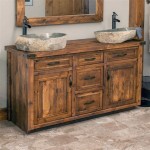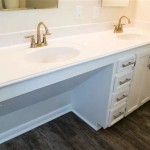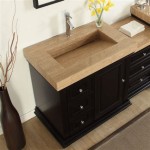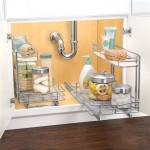Vanity Mirrors: Optimizing Space and Style in Small Bathrooms
Vanity mirrors are essential components of any bathroom, providing functionality for grooming tasks and contributing significantly to the overall aesthetic. In small bathrooms, however, selecting the right vanity mirror becomes even more critical. The limited space demands careful consideration of size, shape, lighting, and storage features to maximize utility and create a more visually appealing environment. This article explores key considerations for choosing vanity mirrors specifically designed for small bathrooms, focusing on optimizing space and enhancing style.
The selection process for a vanity mirror in a compact bathroom should begin with a thorough assessment of the available space. Accurate measurements are paramount. Consider the width and height of the vanity itself, as the mirror should ideally be proportional to the sink and countertop. Furthermore, evaluating the existing lighting conditions is crucial. If natural light is limited, integrated lighting within the mirror or strategically placed sconces will be necessary. The desired style and overall design theme of the bathroom should also influence the mirror choice, ensuring a cohesive and harmonious look. Functionality and storage needs should be addressed as well. Options such as medicine cabinets or mirrors with built-in shelving can offer valuable storage space in a cramped bathroom, minimizing clutter and maximizing efficiency.
Key Considerations for Space Optimization
In small bathrooms, every square inch counts. Therefore, selecting a vanity mirror that effectively utilizes the available space is paramount. Several design features contribute to space optimization, allowing for a functional and visually appealing bathroom layout.
First, the size of the mirror should be carefully considered. An oversized mirror can overwhelm a small bathroom, making it feel even more cramped. Conversely, a mirror that is too small will not provide adequate visibility and may appear disproportionate. A general rule of thumb is to choose a mirror that is slightly narrower than the vanity itself. This creates a balanced and aesthetically pleasing look. Vertically oriented mirrors can also create the illusion of height, making the room feel more spacious. However, horizontally oriented mirrors might be better suited for bathrooms with already high ceilings to accentuate the width of the space.
Second, integrated storage solutions can significantly enhance space optimization. Medicine cabinet mirrors offer hidden storage for toiletries and personal care items, reducing clutter on the countertop and in other areas of the bathroom. Shelving units incorporated into or adjacent to the mirror can provide additional storage for frequently used items, such as toothbrushes, soap, or small decorative objects. These storage options should be chosen carefully considering the depth and accessibility. Shallow shelves are preferred to avoid protruding too much into the room and creating a cramped feeling.
Third, the shape of the mirror can also influence the perception of space. Rectangular mirrors are a classic and versatile choice, while round or oval mirrors can soften the lines of a small bathroom and create a more inviting atmosphere. Asymmetrical shapes can be used sparingly to add visual interest, but care should be taken to avoid creating a sense of imbalance. The shape chosen should complement the overall style of the bathroom and the shape of other fixtures, such as the sink and toilet.
Finally, frameless mirrors can create a sleeker and more modern look, blending seamlessly into the surrounding wall. They also tend to appear less bulky than framed mirrors, which can be beneficial in a small bathroom. Framed mirrors can add a touch of elegance or rustic charm, but it is important to choose a frame that is not too ornate or overwhelming for the space. The frame material and color should complement the other finishes in the bathroom, such as the faucets, lighting fixtures, and cabinet hardware.
Illumination Strategies
Adequate lighting is crucial in any bathroom, and especially important in small bathrooms where natural light may be limited. Vanity mirrors with integrated lighting or strategically placed sconces can dramatically improve visibility and enhance the overall ambiance of the space.
Integrated LED lighting is an increasingly popular option for vanity mirrors. LED lights are energy-efficient, long-lasting, and provide a bright and even illumination. They can be incorporated into the mirror design in a variety of ways, such as backlighting, edge lighting, or spotlights. Backlit mirrors create a soft and diffused glow, while edge-lit mirrors provide a more focused and directional light. Spotlights can be used to highlight specific areas of the face or to add a touch of drama. When selecting a vanity mirror with integrated LED lighting, it is important to consider the color temperature of the light. Warm white light (2700K-3000K) is generally preferred for bathrooms, as it creates a more relaxing and inviting atmosphere. Cool white light (4000K-5000K) can be used for tasks that require more detail, such as applying makeup or shaving.
Sconces are another excellent option for illuminating a vanity mirror. They can be mounted on either side of the mirror or above it, providing a balanced and flattering light. When choosing sconces, it is important to consider their size, style, and light output. Small sconces are generally preferred for small bathrooms, as they will not overwhelm the space. The style of the sconces should complement the overall design theme of the bathroom. The light output should be sufficient to provide adequate illumination for grooming tasks, but not so bright as to be harsh or uncomfortable. Dimmable sconces offer the flexibility to adjust the light level to suit different needs and preferences.
In addition to integrated lighting or sconces, ambient lighting can also play a role in illuminating a small bathroom. A ceiling light or recessed lighting can provide general illumination, while accent lighting can be used to highlight specific features, such as artwork or decorative objects. Layering different types of lighting can create a more dynamic and visually appealing space.
Regardless of the lighting strategy chosen, it is important to ensure that the light is evenly distributed and free from harsh shadows. This can be achieved by using multiple light sources and by choosing bulbs with a high color rendering index (CRI). A high CRI indicates that the light source accurately renders colors, which is important for tasks such as applying makeup or shaving.
Style and Aesthetics
The vanity mirror plays a significant role in the overall style and aesthetic of a bathroom. In small bathrooms, it is particularly important to choose a mirror that complements the existing décor and enhances the overall ambiance of the space.
The style of the mirror should reflect the overall design theme of the bathroom. For example, a modern bathroom might benefit from a sleek and minimalist frameless mirror, while a traditional bathroom might call for a more ornate framed mirror. A rustic bathroom might incorporate a mirror with a distressed wood frame, while a glamorous bathroom might feature a mirror with a beveled edge or a decorative embellishment.
The shape of the mirror can also contribute to the overall style of the bathroom. Rectangular mirrors are a classic and versatile choice, while round or oval mirrors can soften the lines of a small bathroom and create a more inviting atmosphere. Asymmetrical mirrors can add visual interest, but should be used sparingly to avoid creating a sense of imbalance. Geometric shapes are also gaining popularity in contemporary designs.
The frame material and finish can also influence the style of the mirror. Wood frames can add warmth and texture, while metal frames can create a more modern and industrial look. The finish of the frame should complement the other finishes in the bathroom, such as the faucets, lighting fixtures, and cabinet hardware. Common finishes include chrome, brushed nickel, oil-rubbed bronze, and matte black.
Beyond the basic shape and frame, decorative elements can also enhance the style of a vanity mirror. Beveled edges can add a touch of elegance, while etched designs can create a subtle pattern or texture. Some mirrors feature integrated shelves or storage compartments, which can be both functional and stylish. The addition of a small decorative plant or a few carefully chosen accessories can further enhance the visual appeal of the vanity area.
Finally, it is important to consider the overall scale and proportion of the mirror in relation to the other elements in the bathroom. The mirror should be large enough to provide adequate visibility, but not so large as to overwhelm the space. The height of the mirror should also be appropriate for the height of the vanity and the height of the users. A well-chosen vanity mirror can transform a small bathroom into a stylish and functional space.

27 Bathroom Mirror Ideas For Every Style Wall Decor

Klajowp 28 In W X 20 H Small Rectangular Frameless Anti Fog Led Light Wall Mounted Bathroom Vanity Mirror White Sm01 5070 02 The Home Depot

Klajowp 36 In W X 24 H Small Rectangular Framed Wall Mounted Bathroom Vanity Mirror Black Rm01 6090 120 The Home Depot

20 Stylish Bathroom Mirror Ideas

36 In W X 24 H Small Rectangular Framed Wall Mounted Bathroom Vanity Mirror Black Com

4 Pieces Every Small Bathroom Needs 2024 On Roomhints Com

7 Bathroom Mirror Ideas Lowe S

Paihome 16 In W X 24 H Small Rectangular Metal Framed Wall Mounted Bathroom Mirros Vanity Mirror Black Hd 16241 Drbl The Home Depot

20 Stylish Bathroom Mirror Ideas

How To Choose A Bathroom Mirror
Related Posts







